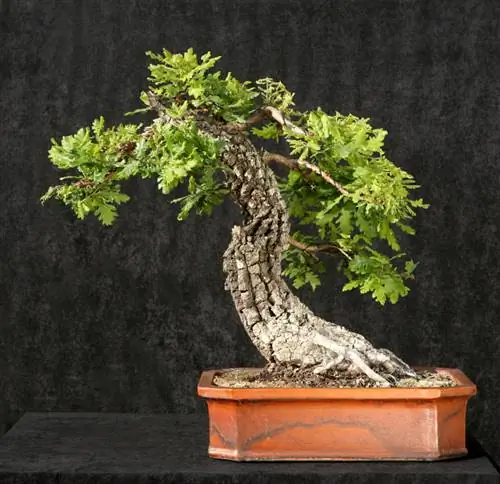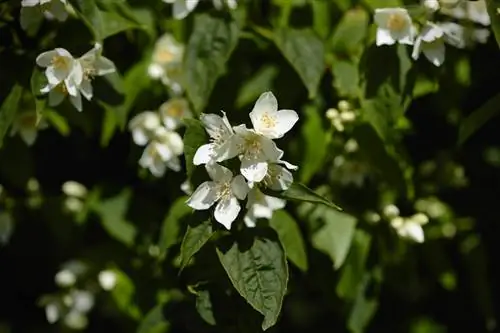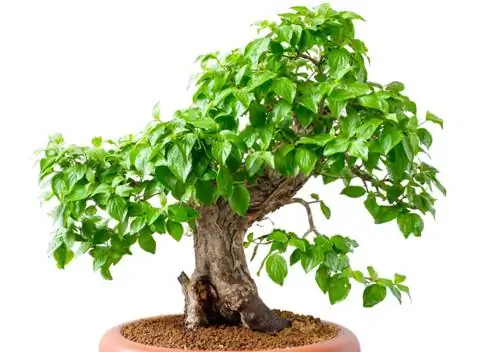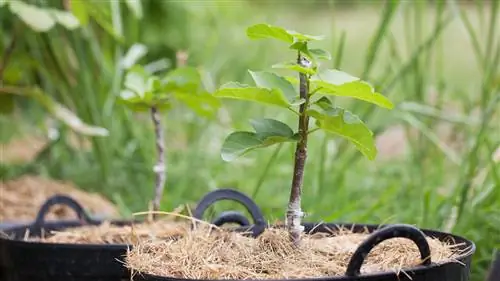- Author admin [email protected].
- Public 2023-12-16 16:46.
- Last modified 2025-01-23 11:20.
Jasmine is not often grown as a bonsai. The plants are definitely suitable for care as a bonsai. This is how you overwinter, cut and wire jasmine as a bonsai. Tips for proper care.

How do you properly care for a jasmine bonsai?
Proper care for a jasmine bonsai includes summer pruning at the end of June/beginning of July, careful wiring of young shoots, overwintering at 5-10°C, transplanting every two to three years and removing inflorescences after flowering.
Suitable species for jasmine as bonsai
- Jasminum nudiflorum (winter jasmine)
- Jasminum polyanthum (white flowering)
- Jasminum primulinum (yellow-flowering)
- Murraya paniculata (Orange Jasmine)
The Jasminum nudiflorum variety, which develops yellow flowers at the end of winter, is conditionally hardy; all other species must be overwintered indoors.
Orange jasmine is not real jasmine, but a type of citrus. Not only does it look very similar to Jasminum, but it also smells very strong. In terms of cultivation and care, it does not differ from the Jasminum species.
Cut bonsai jasmine correctly
Summer pruning is important, which ideally takes place at the end of June / beginning of July. The branches are shortened to three nodes. Cuts into old wood may only be made if absolutely necessary. The cut must then be thoroughly disinfected and covered.
Carefully wire jasmine
Only young shoots from the previous year are suitable for wiring. They tear very easily and must therefore be tied carefully. It is advisable to wrap them with masking tape (€9.00 on Amazon). The wire will be removed after three months at the latest.
Overwintering bonsai jasmine
Since bonsai jasmine is not hardy, the pot must be brought into the house when temperatures drop below 5 degrees.
The best location for overwintering is a cold house or a bright staircase. Under no circumstances should temperatures rise above 10 degrees or fall below freezing point.
Repot every two to three years
After three years at the latest it is time to repot the bonsai. The roots are heavily pruned before the jasmine is placed in fresh potting soil and, if necessary, in a larger pot.
As potting soil for bonsai jasmine, bonsai experts recommend a mixture that consists of 80% akadama and 20% compost soil.
Tip
Jasmine is characterized by very strong growth. To care for it as a bonsai, you must therefore remove all inflorescences and cut all branches with flower buds immediately after flowering. Only shoots with leaf buds remain standing so that they can continue to branch.






